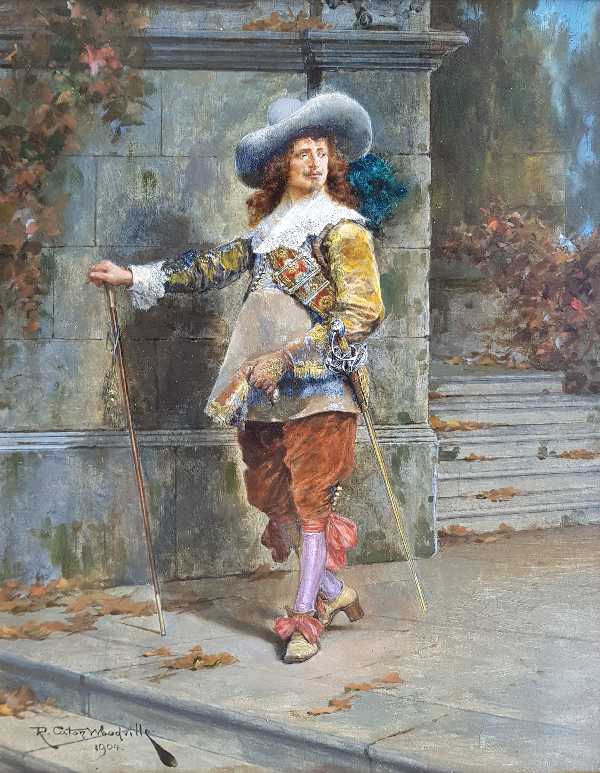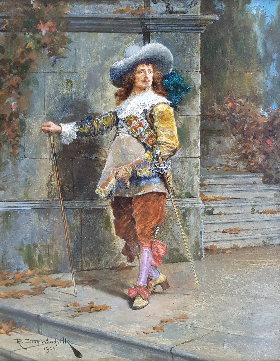Artists Biography
Richard Caton Woodville
British 1856-1927
Woodville Jnr. studied at the Düsseldorf school of painting under the Prussian military artist Wilhelm Camphausen, and then Eduard von Gebhardt, before briefly studying in Russia and then Paris under Jean-Léon Gérôme.
During his lifetime, Woodville enjoyed great popularity: he wrote as well as painted, and was often the subject of magazine and journal articles. He spent most of his career working for the Illustrated London News but was also published in Cornhill Magazine, Strand Magazine and The Tatler.
The Illustrated London News sent Richard Caton Woodville to report upon the Russo-Turkish War (1877–1878) where he experienced battle first-hand and then again in 1882 during the Anglo-Egyptian War where he made numerous sketches and also obtained photographs of the trenches at Tel-e-Kebir for his friend and co-artist, Alphonse-Marie-Adolphe de Neuville, who had been commissioned to paint a scene of the battle.
The Illustrated London News also commissioned Woodville to complete a commemorative special series recreating the most famous British battles of history. He depicted ‘The Charge of the Light Brigade’ (Palacio Real de Madrid) and ‘The Charge of the 21st Lancers at Omdurman’ (Walker Art Gallery), Battle of Blenheim, Battle of Badajos and several Battle of Waterloo pictures.
Woodville's ‘Before Leuthen’ proved to be popular when it was exhibited in the Royal Academy in 1879. He then went on to exhibit regularly in Burlington House where 21 of his battle paintings were eventually shown. His most popular works there were ones that dealt with contemporary wars such as the Zulu War and the First Boer War. His works from Egypt were exhibited at the Fine Art Society in 1883 where his painting ‘The Moonlight Charge at Kassassin’ also proved to be very popular. The following year he exhibited by Royal Command.
He married Annie Elizabeth Hill in 1877 and had twin sons, actor Anthony Caton Woodville and painter William Passenham Caton Woodville, in 1884.
Sadly, on 17 August 1927, Woodville was found shot at his studio at St John's Wood. A revolver was discovered and an inquest determined that he was of unsound mind and had committed suicide. He died effectively destitute and his grave in the old section of St Mary's Catholic Cemetery in Harrow Road, adjacent to Kensal Green cemetery, was not marked at the time of his death. In September 2013 a headstone, commissioned by his great-grandson, was placed on his grave.
Richard Caton Woodville is still exhibited today in the National Army Museum, the Tate, Walker Art Gallery, and the Royal Academy.



